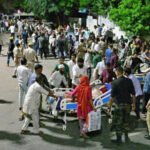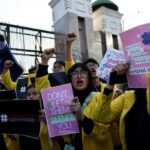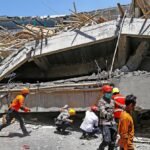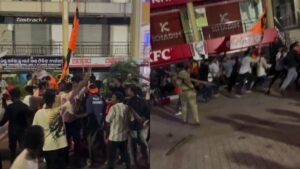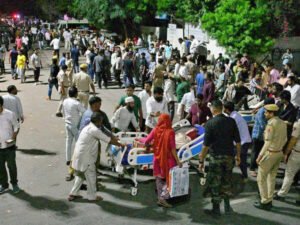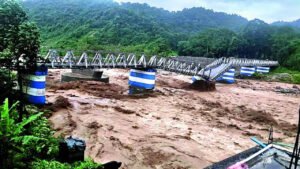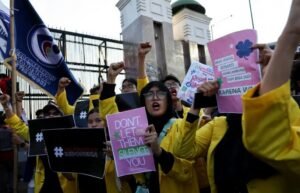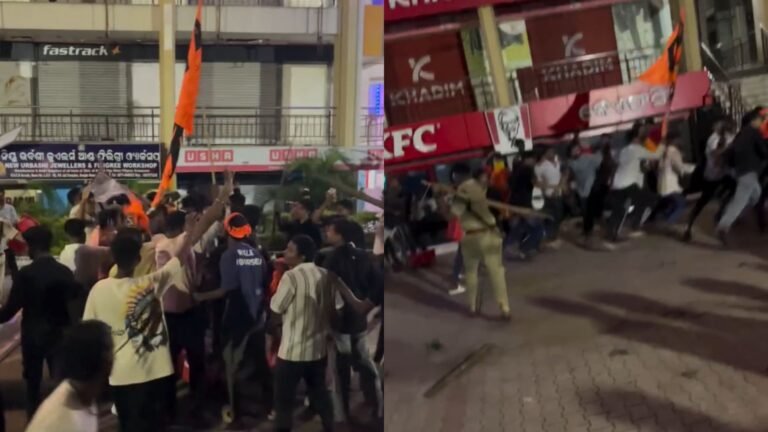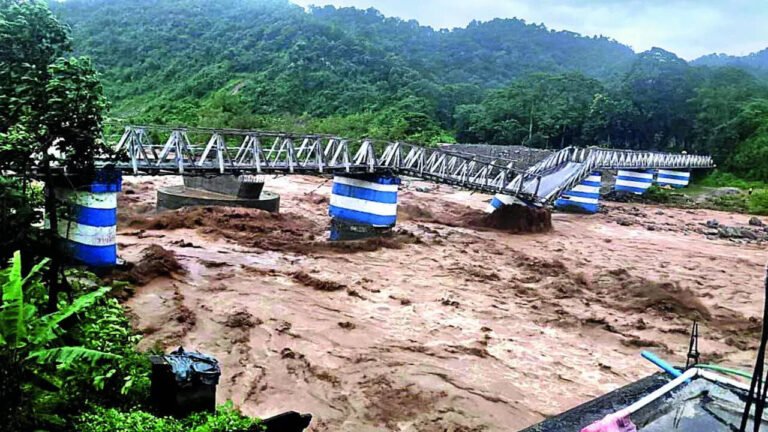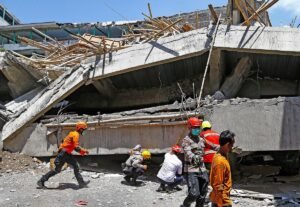Morocco’s capital Rabat gleams with new roads, restored buildings, buzzing cafés and its immaculate Andalusian Gardens. Yet across the river, the gloss quickly comes off King Mohammed VI’s showpiece city.
The adjacent commuter town of Sale is full of rutted roads, dilapidated housing and crime. A hotbed for activists over the years, it erupted again this week as young protesters in the densely populated neighborhood of Al-Amal smashed police cars, vandalized banks and set properties ablaze. They were met with a brutal crackdown by the authorities.
Their anger stems from widening inequalities in a country that’s spending billions on hosting the World Cup and such things as Africa’s biggest ice hockey rink, and where the ruling class lives lavishly but youth unemployment sits at 60 per cent. And it’s a resentment that’s echoing across the globe at the moment.
Also Read
While Europeans and Americans are showing their frustration by choosing more extreme politics, Moroccans joined a surge in Gen Z demonstrations in Africa and Asia against aging leaders, corruption, joblessness, income disparities and economies that have left people in their teens to late 20s behind.
Thousands have taken to the streets in countries including Madagascar, Indonesia, Kenya and Mongolia over the past year as dissatisfaction with the status quo has boiled over, mobilized on social media.
Flagrant displays of wealth — from presidents wearing luxury watches worth three years of a regular salary to the children of ministers posting glamor shots from Ibiza on Instagram — have fueled the ire.
That was particularly true in Nepal last month and Bangladesh last year, the most successful Gen Z protests. In both cases, demonstrators sparked the collapse of governments.
“What is distinct about the current wave of youth mobilization is the convergence of conditions across very different political environments,” said Bilal Bassiouni, head of risk forecasting at advisory firm Pangea-Risk. “Young people are confronting rising costs of living and weak job creation at the same time as political authority is concentrated in aging elites with little space for renewal.”
Protests continued on Friday in Madagascar, where police have killed at least 22 people, even after President Andry Rajoelina sacked his entire government in response to the unrest.
Three people have died in Morocco and more than 1,000 were detained, marking the most serious wave of unrest since the Arab Spring, revolutions that started along the coast in Tunisia, but which Morocco managed to avoid.
Geared up by a leaderless, tech-savvy group dubbed GenZ212, the Moroccan demonstrators’ anger has been fueled by profligate spending on the 2030 football World Cup at the expense, they say, of health and education.
As in many of the developing countries that have experienced unrest recently, inequality has soared in Morocco. Youth unemployment is rife even as the country has become a key industrial hub for Europe, particularly as a producer of cars. The economy has been growing below 4 per cent on average since 2011, but it’s not enough to make a dent in jobless rates, echoing some of the metrics during the Arab Spring.
All that’s left is to protest, according to Houssam, who earns a living as a driver on the ride-sharing app InDrive in Rabat. He asked not to be identified by his full name because he fears reprisals from the government.
“I know I will never be able to own a home, not with what I earn today — I am always in the red,” said the 29-year-old as he drove on the avenue where the King Mohammed VI tower, with its massive adjacent mall, loomed on the horizon. “We are just window-shopping in this country.”
It’s a sentiment that binds together protests thousands of miles apart.
Nepal experienced its biggest political crisis in years last month, when young demonstrators set government buildings ablaze to protest endemic corruption and limited job opportunities in the Himalayan nation. The unrest was triggered by a ban on social media, but even after the government reversed it, protests spread.
Much of the anger targeted “nepo kids,” the privileged, well-connected offspring of Nepal’s elite, who flaunt their lifestyles online. Homes of wealthy and influential families in Kathmandu were torched. The crisis forced the prime minister and several top officials to resign, and left more than 70 dead and hundreds injured.
The Nepal demonstrations came just days after protesters spilled into the streets of Indonesia. The trigger there was a $3,000 housing handout for lawmakers, but the unrest eventually exploded into a broader movement against corruption and impunity among Indonesia’s ruling class.
Change has come elsewhere, too. Tens of thousands of Kenyan youth took to the streets last year, storming parliament and forcing President William Ruto to fire his cabinet and withdraw a controversial tax bill. Their ire was aimed at his perceived inability to tackle rampant corruption.
Also in 2024, young protesters rallied across Bangladesh, culminating in the ouster of longtime leader Sheikh Hasina.
“Governments have sought to manage this public anger in the past by ignoring, appeasing, or repressing,” said Michael Kugelman, a non-resident fellow at the Asia Pacific Foundation. “But that approach is no longer working.”

